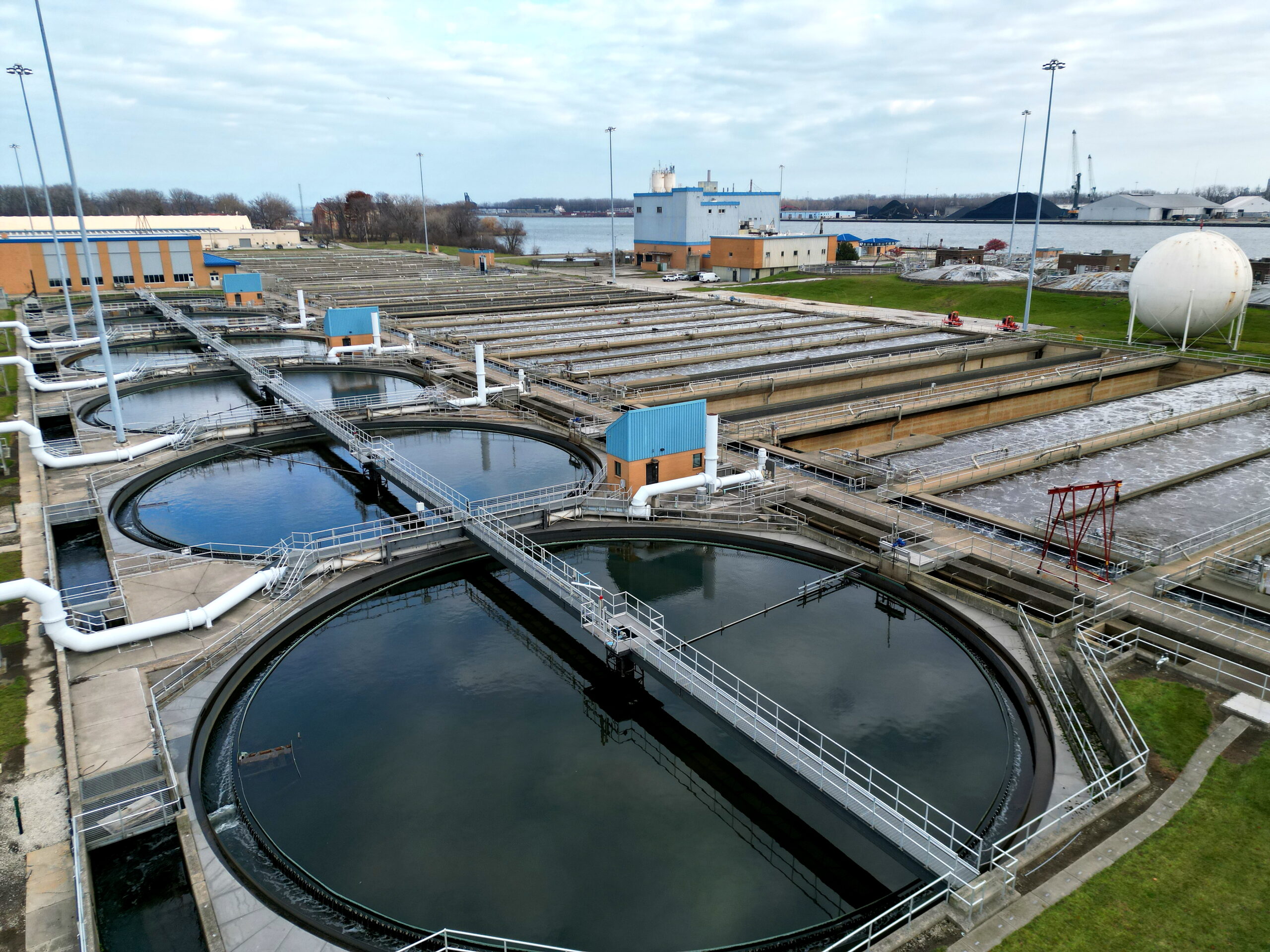Reaching for the Stars
Sixty years ago, the thought of turning one of America’s dirtiest rivers into a national park seemed as unlikely as landing a man on the moon. Remarkably, both came true in less than a decade and both proved that our nation’s collective resolve and resources could accomplish the impossible. Neil Armstrong’s “giant leap” in 1969 and Cuyahoga Valley National Park’s founding in 1974 inspired a generation, including a Harvard-trained attorney and environmentalist from Cleveland named George Hawkins.
“I knew the scale of change would be a moonshot,” Hawkins says, recalling the daunting challenges facing Washington DC’s Water and Sewer Authority in 2009 during his first month as CEO. As an experienced environmental regulator who served on the utility’s board, he thought he was up to the task.
“What I did not know was how backwards the day-to-day operations were compared to how heroic the employees were. I panicked as I watched a crew repairing a pipe that was a century old, looking at printed maps stained from years of use and wondering who would talk to angry customers .”
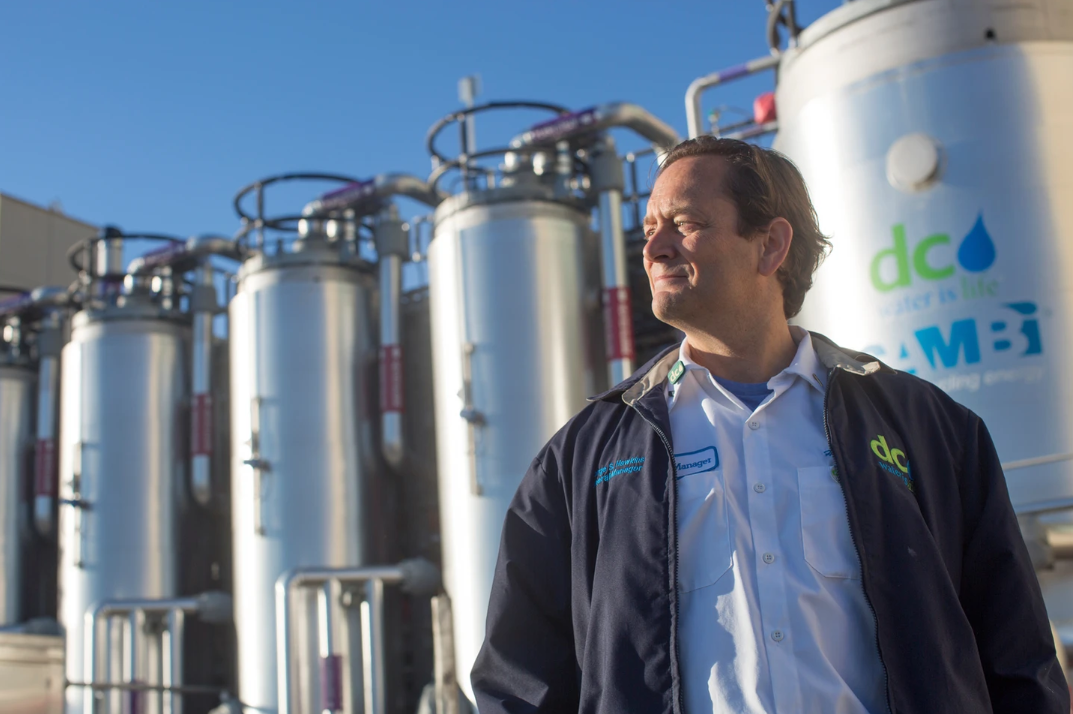
Hawkins systematically oversaw the utility’s complete overhaul, introducing portable electronic network mapping and a series of equipment upgrades that cut costs, improved output, and boosted employee morale. His success transforming DC Water inspired him to found Moonshot Missions, a nonprofit consultancy that shares first-hand experiences of water plant professionals with counterparts nationwide in peer-to-peer advising. Their credo is simple: to listen.
“That was the first thing I did,” says Hawkins. “When I talked to the team, they had a great sense of personal pride in the work they did, but no sense that anybody else understood. To the outside, they were just sewer people. I heard all sorts of things they wanted to do, but never had the chance. So when we started upgrading, it was based on their ideas.”
In 2022, Moonshot Missions and a set of utilities began working across the Great Lakes helping other Rust Belt wastewater utilities meet higher standards set to protect water quality. With funding from the Great Lakes Protection Fund, the group is beginning with six communities—selected for having particularly limited resources and daunting needs—in the Moonshot Great Lakes Program, to create new ways to improve water quality by streamlining utility upgrades with affordable technology and ultimately increasing revenues.
The program will next expand to include 25 utilities, borrowing from lessons learned in this pilot phase. Eventually, every utility in the region will be able to use the “playbook” these communities are creating. With enactment of the Bipartisan Infrastructure Law (BIL) in 2021, which quintupled federal funding for water infrastructure and allocated 40% of those monies to small and disadvantaged communities, the next few years are a rare window of opportunity to put that playbook to work.
The program’s two largest utilities, in Toledo and Akron, are flip sides of the same coin—contrasting snapshots of what is at stake and what can be accomplished. Toledo is just beginning a seven-year renovation program while Akron is nearing the finish line. Two smaller communities—Lima, Ohio and Gary, Indiana—are examples of what can be accomplished with the help of Moonshot in optimizing operations and developing funding strategies.
A Crooked River Goes Clean
Standing atop the main outflow channel of Akron’s Water Reclamation Facility, superintendent Steve Baytos proudly watches sparkling water gush over a weir from the plant into the Cuyahoga, a Native American name for “crooked river.” We are scant miles upstream from Cuyahoga Valley National Park.
“To be safe for drinking, water can have up to 2 parts per billion of mercury, but my limit is 1.3 parts per trillion,” says Baytos, explaining that stricter limits come with discharging into a healthy river.
“That’s over 1000 times cleaner than normal standards. We’re cleaning water for fish and crawfish, which are really small organisms compared to humans.”
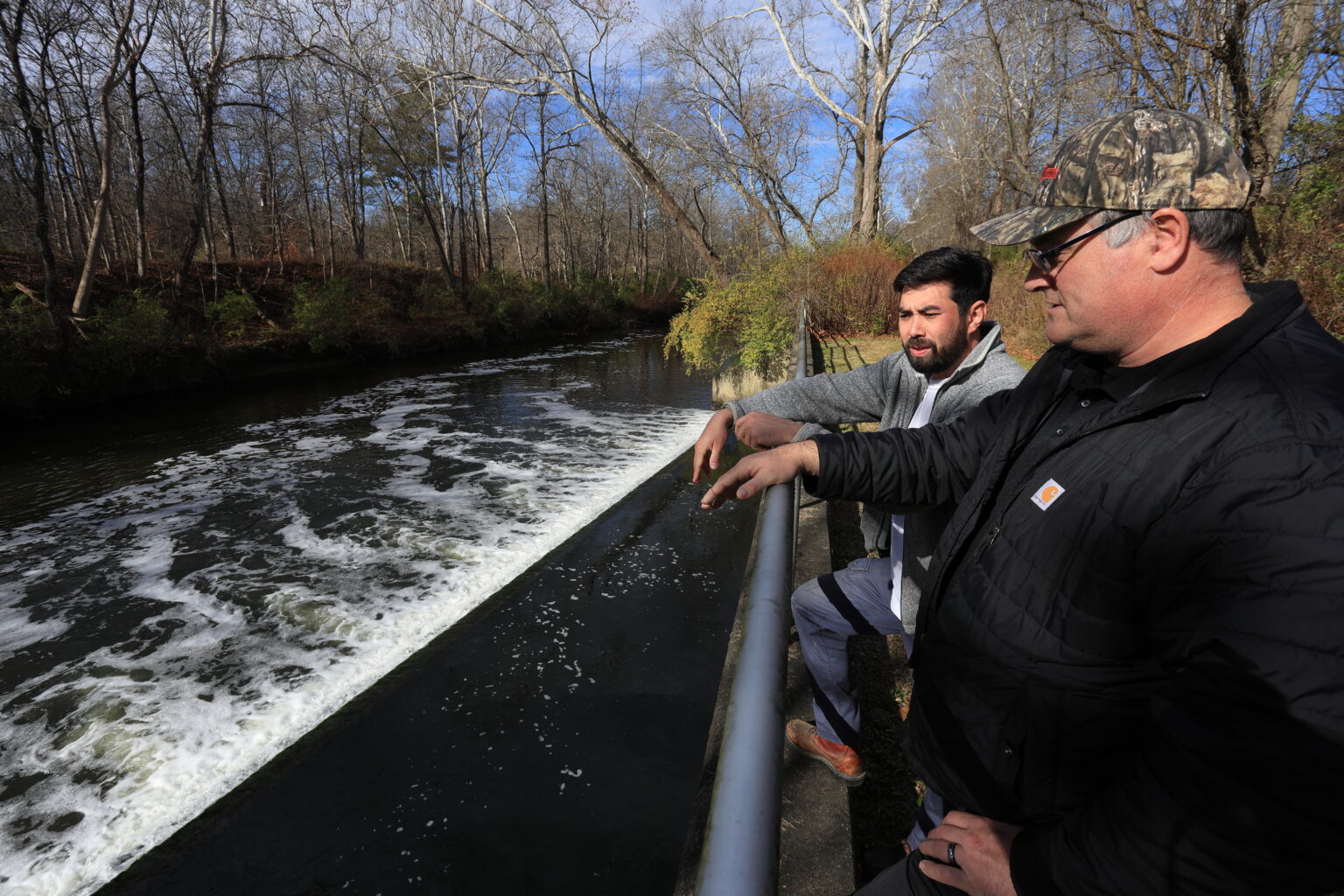
He points out a popular local fishing spot on the opposite bank as a cyclist speeds along the tree-lined Towpath Trail, a vestige of the defunct Ohio and Erie Canal that runs from Cleveland through the national park to the Ohio River.
Steady upgrades at the plant since 1996 have produced impressive results. Combined Sewer Overflows (CSOs) —a result of heavy rainfall causing unintended raw sewage spills in waterways —have plummeted 96% from 2.4 billion gallons per year to 100 million gallons. The treatment process, where highly aerated bacteria consume dissolved contaminants, has been optimized by installing ultra-efficient hypersonic blowers.
Biosolids generated from the treatment basins are pumped to an anaerobic digester that can produce enough methane-fired electricity to power half the plant. Nearby landfills pay the plant $1 million per year to accept their rainfall runoff, called leachate, which is added to raw sewage to augment production of biosolids and, in turn, increase power generation. Overall, Akron’s Water Reclamation Facility has completed 24 of 26 required goals and is on schedule to complete their long-term control plan.
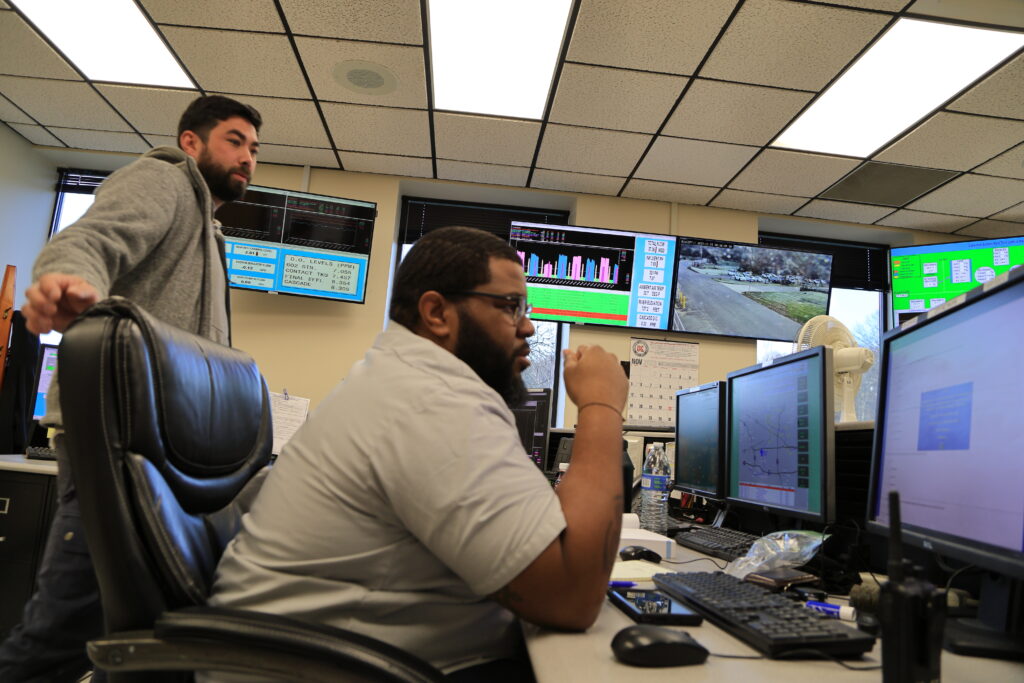
In the main control room, I get an overview of the heart of the matter. A technician monitors a swarm of computer screens, remotely controlling all plant operations as well as hundreds of miles of upstream pipes, pump stations, stormwater retention reservoirs, and a mile-long tunnel capable of storing 26 million gallons of excess water during extreme rain events. The monitors show that on this dry November day only 37 million gallons of wastewater are flowing through the plant. During heavy rains, this can jump to 280 million gallons per day, the plant’s maximum capacity for safely and completely treating all sewage before release into the Cuyahoga.
Driving miles upstream with Baytos and several colleagues, I tour a few of the stations pictured in the control room. Our first stop is the tunnel, looming 27 feet high, and disappearing into a darkness from which a river of wastewater flows. There is surprisingly little odor thanks to the tunnel’s immense size and natural ventilation. During extreme rains, this endless cavern fills to the top.

Though rare, such events prompted Akron to add a $43.5 million auxiliary treatment facility called BioCEPT to its main plant last year. BioCEPT slashed raw sewage bypasses around the plant from a billion gallons in 2011 to zero in 2023 during extreme rains. Such sewage once flowed directly into the Cuyahoga, and, ultimately, Lake Erie.
At our last stop, bureau chief Rob Scarlatelli walks along the wall of a 10-million-gallon wastewater retention basin. It is empty now, but can fill to the brim during spring rains.
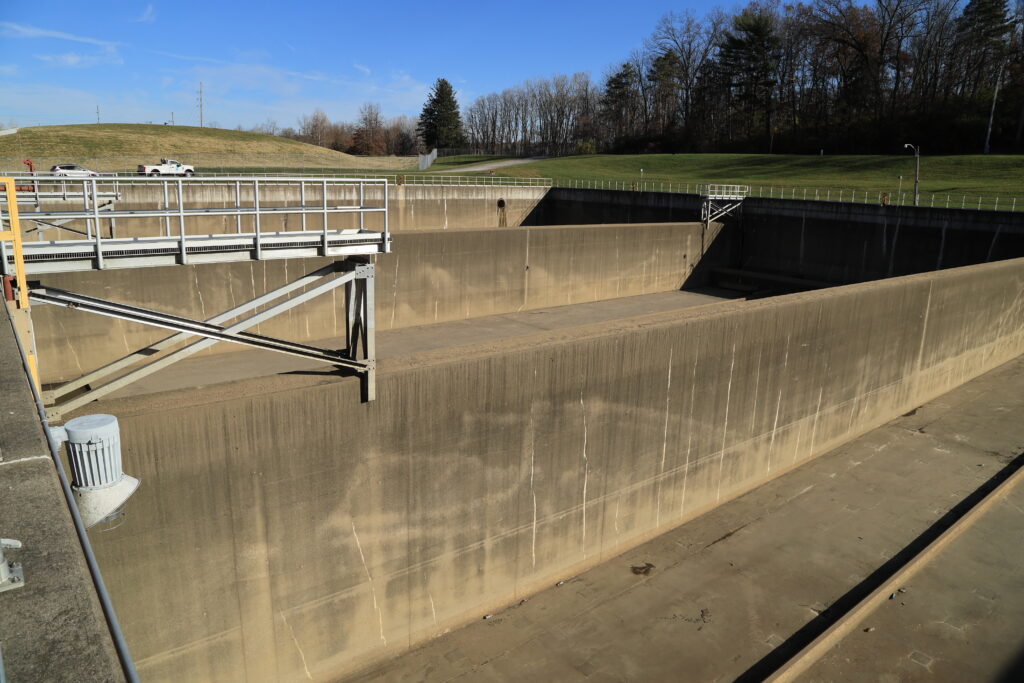
He shows me where engineers hope to install a new and innovative disinfection system. Working with Moonshot Missions, they will test on-demand production of disinfectant from dry powder rather than pumping in an expensive liquid called peroxyacetic acid (aka PAA or peracetic acid). The liquid form is perishable, but the dry powder can last for years.
“PAA expires every six months, and we have to discard anything we don’t use after that,” says Scarlatelli. “We sometimes go two years without needing any, so that means losing tens of thousands of dollars of chemical twice a year.”
On-demand mixing and dosing of PAA from dry powder will be tricky, but, if successful, it will spare Akron an enormous expense. City officials say the liquid system would require a 20% rate hike and be the equivalent of meeting all public-school construction needs or replacing miles of lead service lines and aging water mains— with little benefit to the Cuyahoga.
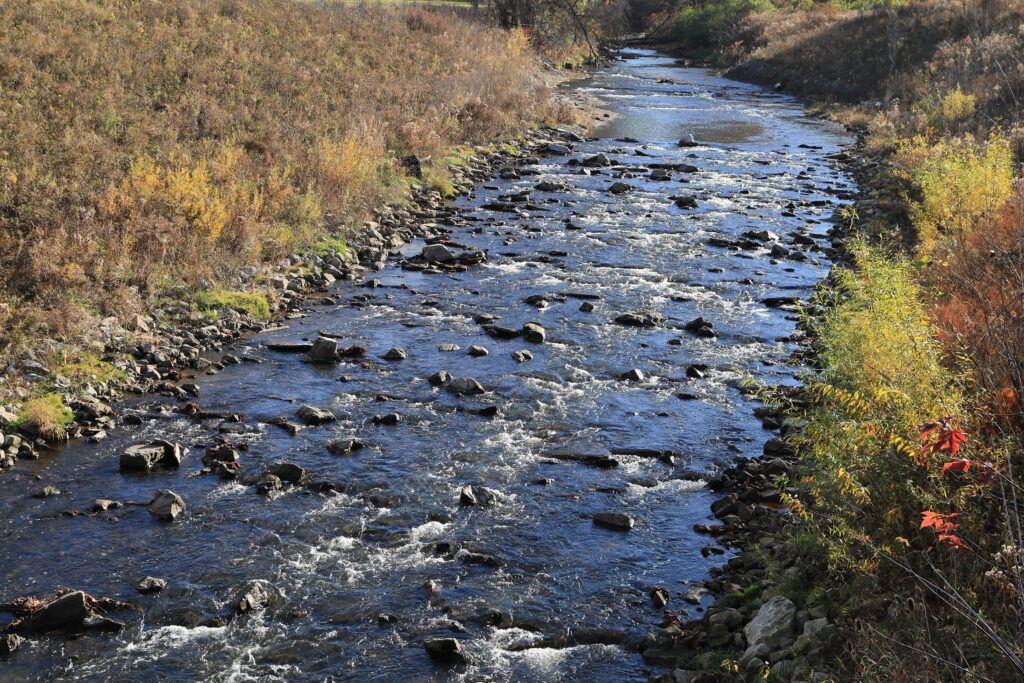
The river, once clogged with grime and oil where it meets Lake Erie in Cleveland, was famous in the 1960s for repeatedly catching fire and becoming a poster child for passage of the Clean Water Act. The Cuyahoga comes by its “crooked” name honestly, forming just 10 miles from Lake Erie and meandering south for 45 miles until a geologic formation near Akron forces it back northward toward the lake. Ironically, a major “tributary” these days is the sparkling outflow from Akron’s wastewater treatment plant.
A Leap Forward
The same geology that created the river’s circuitous course also blessed it with a valuable clay used for over a century to produce the orange, acid-resistant sewer pipe commonly laid across the eastern United States. Before Goodyear and Firestone built headquarters here, sewer pipes—not tires—were Akron’s principal industry.
Those pipes are now crumbling along with other aging wastewater infrastructure. Over one hundred Great Lakes communities, which include the Moonshot Great Lakes Program cities of Akron, Toledo, Lima, and Gary, are struggling to find affordable ways to tackle overflows, tighter discharge restrictions and increased costs to provide service.
At Toledo’s Bayview Water Reclamation Plant (Bayview), fulfilling a consent decree is expected to cost $1 billion. The plant adjoins Ohio’s largest watershed, the Maumee River, where it enters Lake Erie. Industrial docks, factories, and a smattering of yacht marinas meld into the western shores of the lake, visible from the plant. It was there that a deadly algal bloom of cyanobacteria forced the city to shut down its water supply for three days in 2014.

Though summer algal blooms are largely due to agricultural runoff, citizens saw fit to clean up municipal wastewater as well by approving a major bond issue that will help Bayview leap forward on renovations. While that money is vital, additional federal and state funding is sorely needed. Moonshot Missions is helping identify and procure grants while sharing expertise in charting the most economical and efficient path forward.
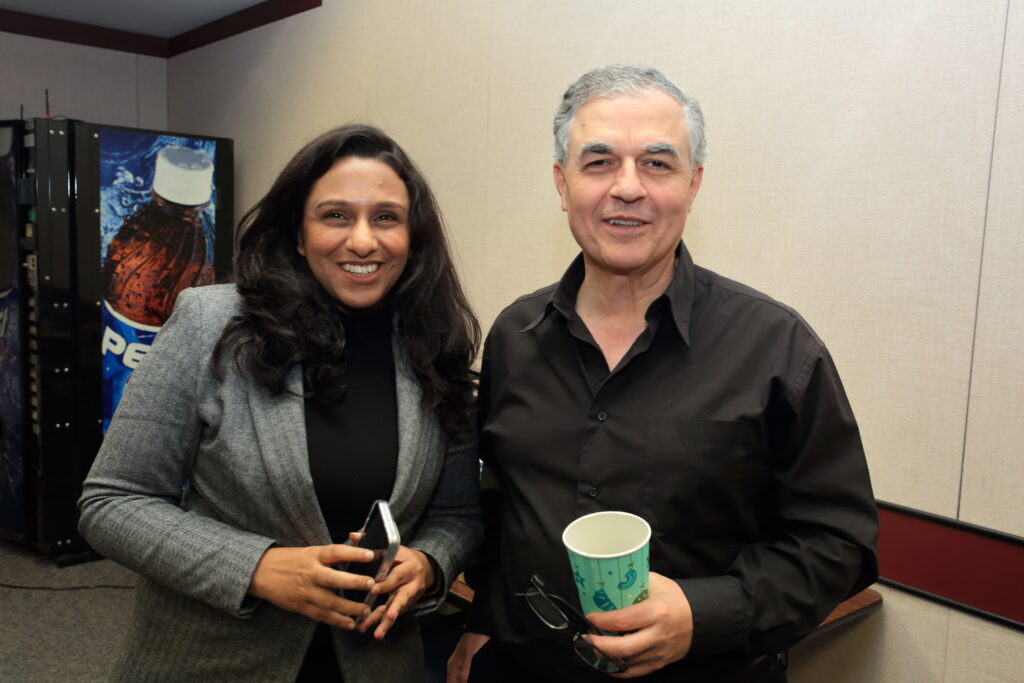
“We start by assessing needs and budgets, and suggesting ways to save money by improving operations,” explains the program lead Rania Bashar, a senior utility advisor with Moonshot Missions during a recent workshop at Bayview. “Low-income communities often lack the resources and the bandwidth to identify and apply for state and federal funding, so we can help there as well.”
The Moonshot team has identified several opportunities to increase revenue by utilizing spare capacity at the plant. Harvesting methane from sludge to produce inexpensive electricity and reduce greenhouse gas emissions is also on the agenda. Moonshot is also providing hands-on guidance on implementation of an Environmental Management System (guidelines for tackling regulations systematically and economically) to reduce the Toledo plant’s environmental impacts and increase its operating efficiency.

“This is our primary treatment area,” says plant administrator of special projects Chuck Campbell, walking past a hulking row of aging equipment.
“We’ll have to keep operating while we upgrade, but this is going to get completely replaced,” he adds. “Physically we’re going to be here, but entire sections of the treatment plant will be demolished and reconstructed. Some buildings will remain, but drives, pumps, and motors will be replaced.”
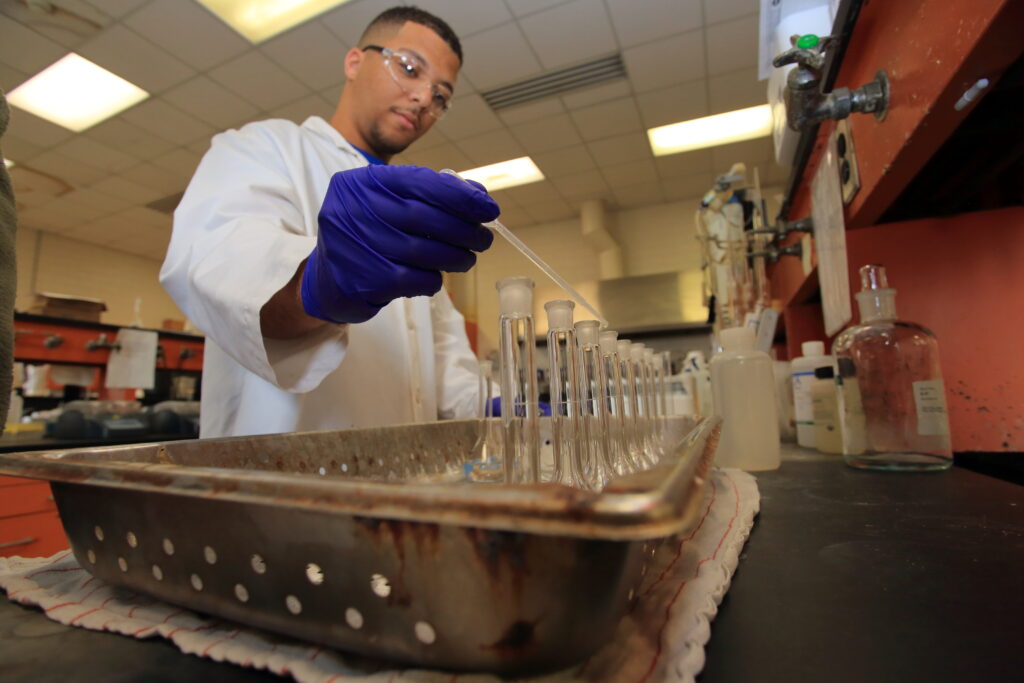
In October 2023, the Ohio EPA tightened restrictions on wastewater phosphorous, a driver of algal blooms. Though agriculture dwarfs urban areas as the main phosphorous culprit, wastewater treatment plants across Ohio are working to conform to the new regulations. In a lab at the far end of Toledo’s 100-acre complex, plant operator of record Tom Jasinski takes careful notes as chemist Darin Bulger tests wastewater for phosphorous levels.
Small Steps, Big Gains
Farther upstream, on a tributary of the Maumee called the Ottawa River, similar tests are being conducted at the Lima Wastewater Treatment Plant. Ferrous chloride is the industry’s preferred remedy for excess phosphorous, but plant managers like Kim Furry are actively searching for new options.
“Our limit was one milligram per liter before, but with the new general permit it’s now at 0.37,” says Furry.
“We’ve never had to treat that low, so we’re testing different chemicals against ferrous chloride. Ferrous is relatively inexpensive, but if that doesn’t get us where we need to be, we’ll work with Moonshot to develop some other avenues.”
Different municipalities face different challenges, Furry explains, depending on their service base. Lima’s customers include soap and fertilizer manufacturers, which are both heavy phosphorous load contributors. Like many mid-size Rust Belt communities, Lima’s population and median income have steadily dropped since the 1980s, so the city walks a financial tightrope. Balancing cost against efficiency is what makes Moonshot’s expertise so important to under-resourced cities.
Gary, Indiana is one of the disadvantaged communities on the program, with nearly one-third of its population living in poverty. While Gary enjoys a small boutique shopping district near Lake Michigan, vacant buildings line its downtown and aging steel mills flank its beaches. Indiana Dunes National Park sits just miles to the east while downtown Chicago towers far to the northwest across the lake, gleaming with wealth. To access some of that prosperity, a rapid transit light rail system is being built that will cut the one-hour commute to just 35 minutes.
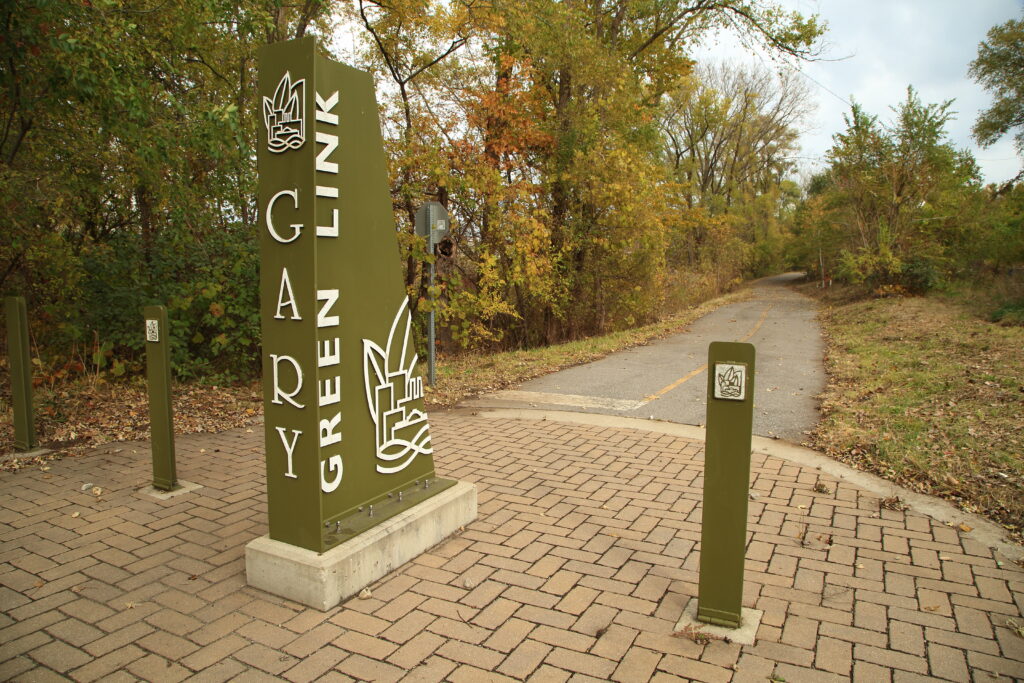
With limited resources on hand, Gary officials are focused on developing a CSO reduction strategy, particularly during rain events and snowmelt that lead to flooding and overload the system, posing threats to public health and the environment.
“We have a list of projects, some shovel ready and some just conceptual,” says Brenda Scott Henry, director of the city’s Environmental Affairs Department.
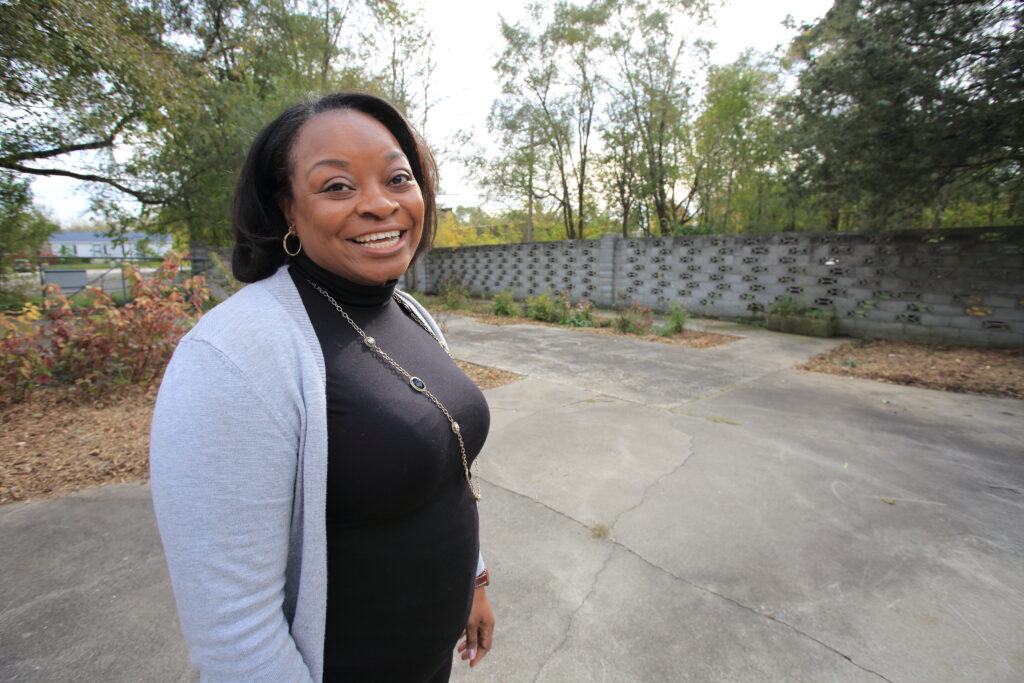
Her special charge is stormwater control, and she has spent years installing green infrastructure across the city to reduce runoff. Recent construction of light rail tracks provided an unexpected boost by adding stormwater catchment systems along the service roads.
“We’ve struggled for so long with EPA on how a city like Gary can meet long-term control plans. The little we have is invested in operating a waste treatment plant, and there’s not even a pot of money set aside for separating storm sewers. We’re looking for creative ways to do that.”
Moonshot Missions has already identified a number of suitable funding sources, including the Federal Emergency Management Agency, and is helping hone Gary’s project list to move the city forward.

Moonshot managing director, Andy Kricun, is enthusiastic about the opportunities that lie ahead for all the communities in the Great Lakes Program. In his days as director of Camden, New Jersey’s wastewater facility, he accomplished the impossible, bringing the ailing public utility back from the brink of being privatized by slashing air and water pollution violations while dropping customer fees by 40%.
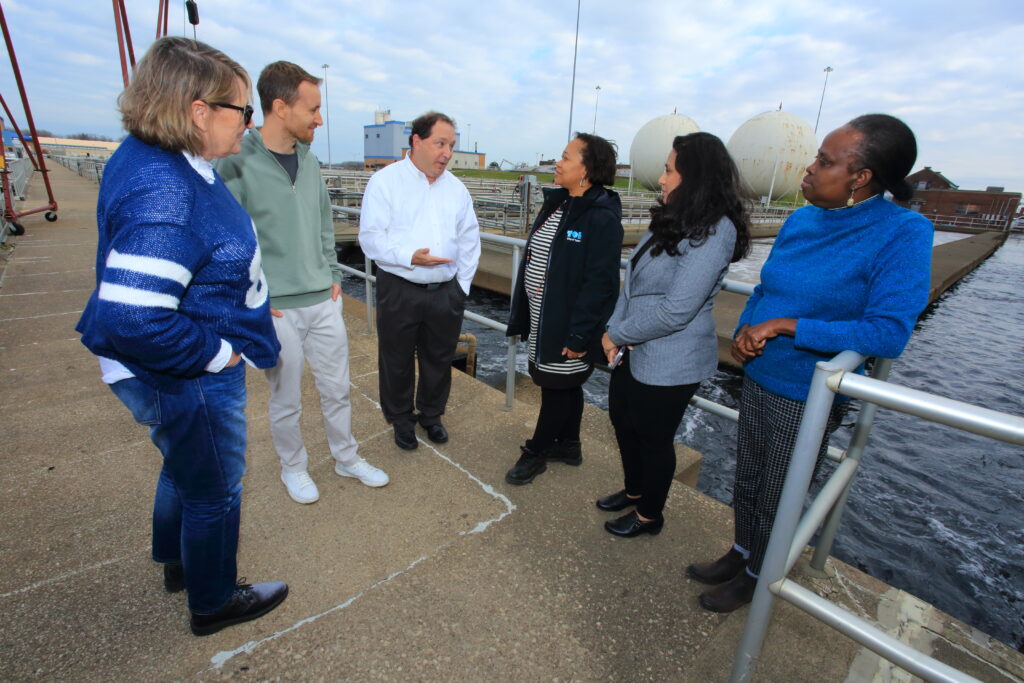
“There’s a big difference between what water utilities are required to do and what they’re allowed to do,” says Kricun. “If we only do what’s required, the community is missing out on what we can do. That gap is where a utility can make a real difference and be an environmental champion.”
It’s also where Moonshot Missions and its growing set of utility partners are making a difference, with small steps toward a “giant leap” in water quality for the Great Lakes.
Story and photos by Randall Hyman except where noted.
